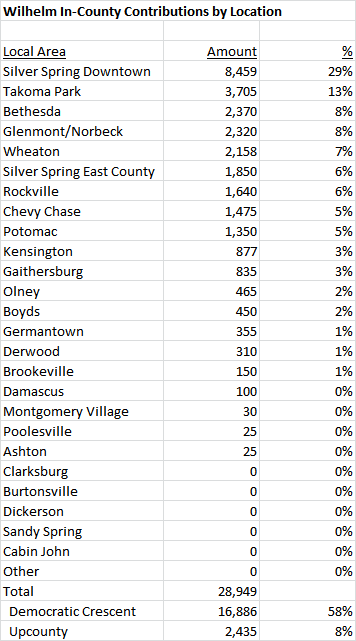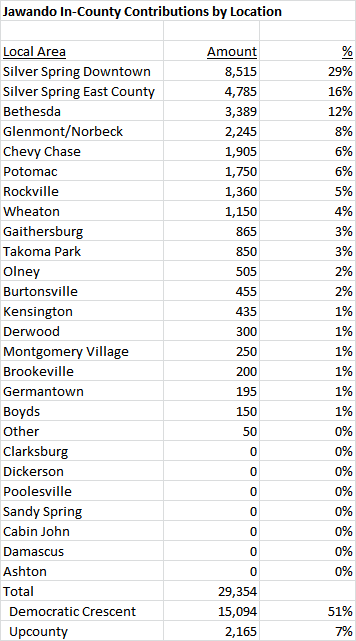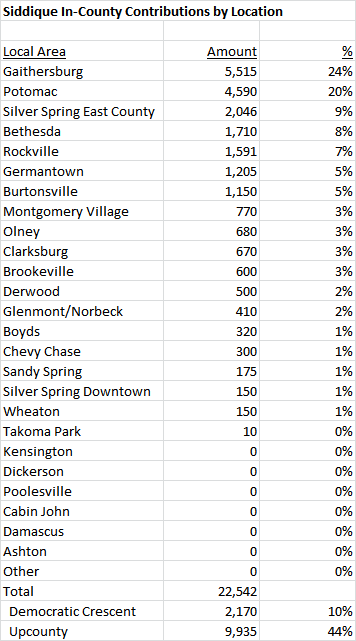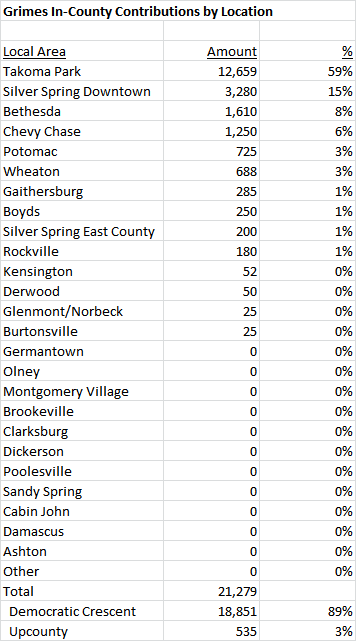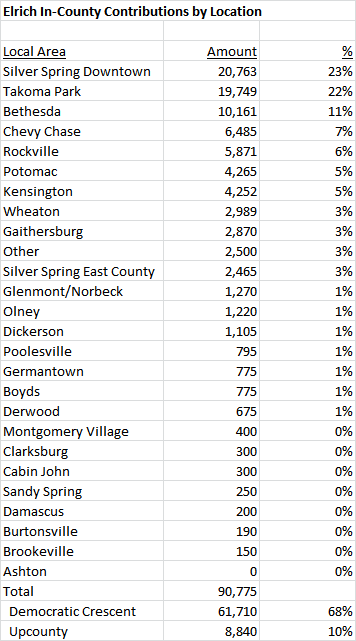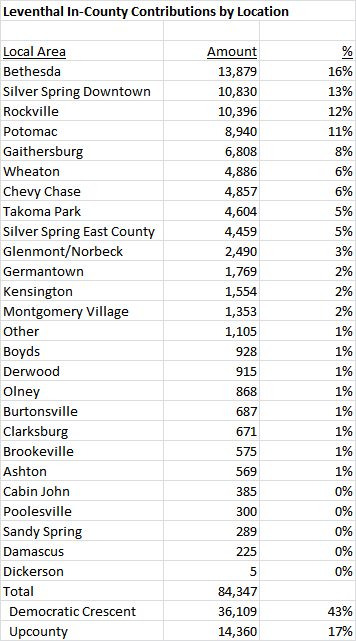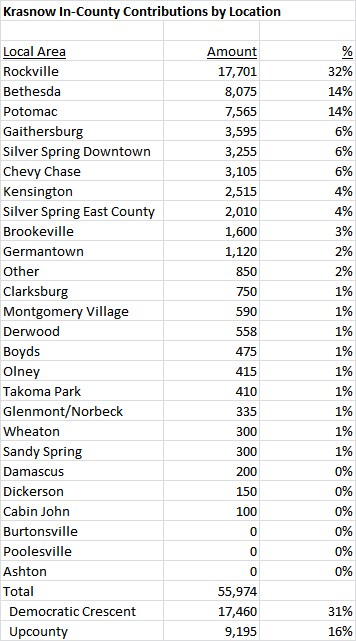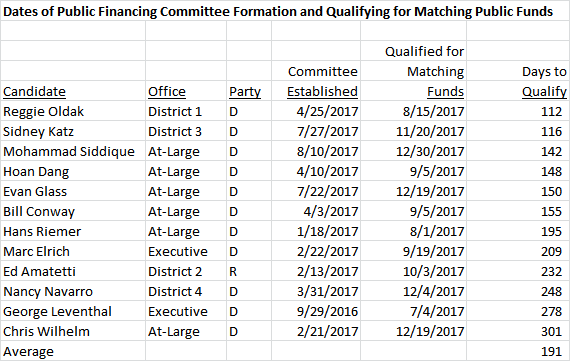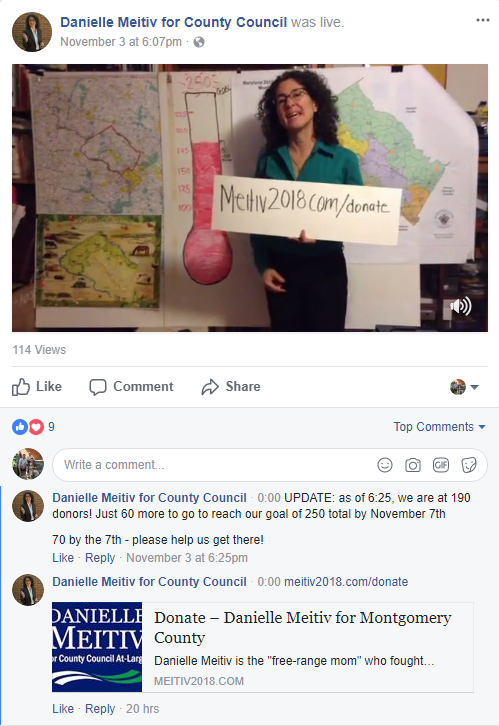By Adam Pagnucco.
This past primary saw the first use of public campaign financing in local elections in Maryland. Many people both inside and outside Montgomery County have been watching the system’s performance. For the benefit of both MoCo policy makers as well as those in other jurisdictions who are considering adoption of this system, here are the things we have learned about public financing.
Public financing was heavily used and helped attract a record number of candidates.
Thirty-three candidates enrolled in public financing. Four of them ran for Executive, nineteen ran for Council At-Large and ten ran in Council Districts. Of these candidates, twenty-three qualified for matching funds – all four Executive candidates, twelve Council At-Large candidates and seven District candidates. That’s a 70% qualification rate. MoCo has never had as many candidates for county office as it had this year – not even close! – and public financing was partially responsible for that. Several candidates told your author that they would not have considered running if public financing had not been available.
Candidates in public financing can win.
Of ten county-level seats, six – Council District 3, Council District 4 and all four Council At-Large seats – were won by candidates in public financing. Three of these winners were incumbents and three were not. The County Executive seat may also be won by a publicly financed candidate pending absentee and provisional ballot counts.
But did public financing change the outcome?
The three incumbents who used public financing and won did not need the system to win. Of the three non-incumbents who won while using it, we predicted that two – Council At-Large candidates Evan Glass and Will Jawando – would be strong contenders more than a year ago because they had run credible races before. The third non-incumbent public financing winner, Council At-Large candidate Gabe Albornoz, would have at least been a viable candidate in the traditional system because of his endorsement by the Washington Post and his networks in the party, the community and among Ike Leggett supporters. The leading Executive candidate in public financing, Marc Elrich, has long outperformed his fundraising and benefited from significant outside progressive support. In no instance can we point to public financing as THE reason a candidate who was otherwise not viable became a winner. In fact, if all candidates had used the traditional system, it’s possible that the exact same group of them would have won.
It was cheaper than expected.
The county set aside $11 million in its public election fund on the assumption that there would be many new candidates and that a lot of them would max out in public matching funds. Yes, there were a lot of candidates, but only four – Council At-Large candidates Evan Glass and Will Jawando, Council District 1 candidate Reggie Oldak and Council District 3 incumbent Sidney Katz – maxed out. Two more Council At-Large candidates – incumbent Hans Riemer and Bill Conway – came close and County Executive candidate Marc Elrich was not far off. As a result, the county spent $4 million in matching funds distributions through the end of June – waaaaaay less than the $11 million in the public election fund.
Incumbents did well in the system.
In his 2014 race, Council At-Large incumbent Hans Riemer raised $271,817. Four years later in public financing, Riemer raised $326,866 through June – a 20% improvement. Council District 3 incumbent Sidney Katz raised $135,589 in 2014. Four years later in public financing, Katz raised $176,265 through June – a 30% improvement. Council incumbent Marc Elrich, who ran for Executive, raised $851,602 through June, a higher total than he had raised before and enough to let him compete with a multi-million-dollar self-funder. Fellow council incumbent George Leventhal, who also ran for Executive, had decent fundraising with $628,426 but his campaign was hurt by front-loaded spending and few endorsements.
The system did not produce credible challenges to district incumbents.
Council District incumbents Craig Rice, Nancy Navarro and Tom Hucker blew out little-known challengers. In the latter case, Hucker’s challenger actually qualified for matching funds and sent out two negative mail pieces but was still wiped out by 45 points in early and election day voting. In the only competitive district race, District 3 incumbent Sidney Katz used public financing to defeat Ben Shnider, who ran in the traditional system. The lack of competitiveness in district races is a long-standing trend that public financing has not changed.
Public financing was administratively challenging.
While no users of public financing told your author that they regretted participating in the system, all of them complained about its cumbersome administrative requirements – especially showing proof of residency to obtain matching funds and dealing with filing issues in the state’s software. The State Board of Elections has every right to verify in-county residency before authorizing release of public funds, but the system’s ease of use should be reviewed by the next County Council.
Raising money in public financing takes a long time.
We wrote about this during the campaign. Because the system relies on a large volume of small contributions, contacting those MANY small contributors takes a long time to pile up serious cash. Late entrants into public financing like County Executive candidate Rose Krasnow and Council At-Large candidate Jill Ortman-Fouse were unable to match competitors in fundraising who also used public financing. The lesson here is if you are going to use this system, start running early.
Self-funders did not overwhelm the system.
In the County Executive race, public financing candidate Marc Elrich fought self-funding David Blair, who gave his campaign at least $2.9 million, to a virtual draw. In Council District 1, Meredith Wellington – who gave her campaign $78,000 – is on her way to finishing fourth behind public financing candidates Ana Sol Gutierrez and Reggie Oldak. Self-funding was not a major factor in the Council At-Large race.
Public financing did not stop interest group participation in the election.
Interest groups may not have been able to contribute large individual, corporate and PAC checks to candidates but they still played. They spent significant amounts on TV and mail in the Executive race and some progressive groups canvassed for their candidates. Just as importantly, institutional endorsements mattered as much as ever. Marc Elrich could not have come close in the Executive race without them. District 1 candidate Ana Sol Gutierrez benefited from them to finish second even though she had lackluster fundraising. District 3 candidate Ben Shnider had many and came closer to winning than most people initially believed. And all four winning Council At-Large candidates (incumbent Hans Riemer, Will Jawando, Evan Glass and Gabe Albornoz) had lots of them. Candidates who lacked interest group support, like Executive candidates Rose Krasnow and George Leventhal and Council At-Large candidates Hoan Dang, Bill Conway and Jill Ortman-Fouse did not come close to winning. Savvy interest groups can exploit public financing by helping candidates of their choice raise money inside the system while using their own money to finance PAC and independent expenditure activity. Here’s a prediction: all of the above will happen again.
Most women using public financing did not win.
Much has been said about the next County Council having just one female member. District 4 incumbent Nancy Navarro used public financing to defeat a no-name challenger. But no other woman in public financing came that close to winning. In early and election day voting, Gutierrez trailed traditionally financed candidate Andrew Friedson in District 1 by seven points. Krasnow finished third in the Executive race by fourteen points. And the highest-performing woman in the Council At-Large race was Marilyn Balcombe, who used traditional financing to finish fifth.
There are numerous reasons to explain these finishes. Gutierrez’s primary voter base was in Wheaton, which is outside District 1. Krasnow and Council At-Large candidate Jill Ortman-Fouse raised money quickly but started too late to raise a lot of it. Council At-Large candidates Brandy Brooks and Danielle Meitiv were unknown in county political circles before running so they could not tap into preexisting donor networks. We believe that female candidates can succeed in the system, but we admit that this cycle presents little evidence of that.
Public financing amplified the influence of the Democratic Crescent.
We have written before about the Democratic Crescent, the region of the county stretching along the Beltway from Takoma Park in the east to Cabin John and Bethesda in the West. This area has a disproportionate number of Democratic activists, voters and political contributors and sent Jamie Raskin to Congress two years ago. Back in March, we found that the Crescent accounted for a majority of public financing contributions to Executive and Council At-Large candidates and waaaaay out-paced contributions from Upcounty. If we were to repeat that exercise today, we have little reason to believe that the result would be significantly different.
The impact of Crescent participation was clearly seen in the Council At-Large results. Riemer, Glass and Albornoz live in the Crescent. Jawando lives outside it but much of his base in Legislative District 20 is inside it. All four oppose M-83, the Upcounty highway demanded by many in Clarksburg.
There has only been one At-Large Council Member from Upcounty since the current council structure was created in 1990. That person – Gaithersburg resident Mike Subin – has an asterisk since he was originally elected in District 2 in 1986 and shifted to an at-large seat when the new structure was put in place four years later. And so the trend of not electing Upcounty residents to at-large seats was well established prior to this year but we wonder if public financing will lock it in.
We have spent $4 million on public financing so far. Was it worth it?
We laid out the pluses and minuses above. Readers, this question is for you to answer!


